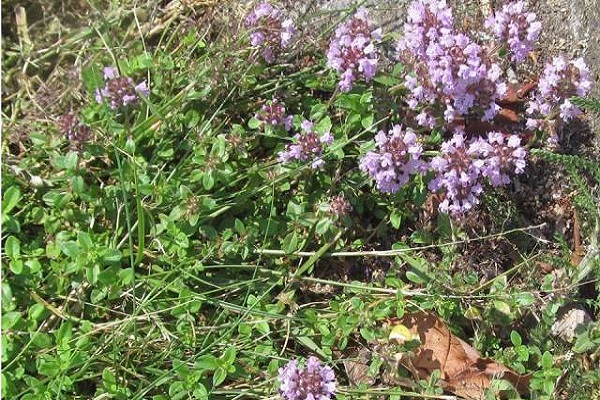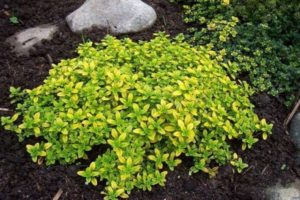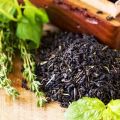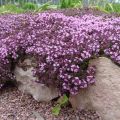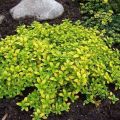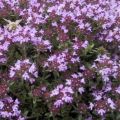Growing, planting and leaving lemon thyme (thyme) from seeds
The medicinal properties of many plants have been known for a very long time. In order to grow their own green pharmacy on the beds, summer residents are looking for opportunities to plant medicinal plants. Growing lemon thyme is not difficult, and its useful qualities cannot be overestimated.
Lemon-smelling thyme: description
There are more than 400 species of this plant, the most common is lemon thyme. It is undemanding to care for, unpretentious and very useful. Its use is very wide: the lemon-smelling thyme is used in cooking, cosmetology and traditional medicine.
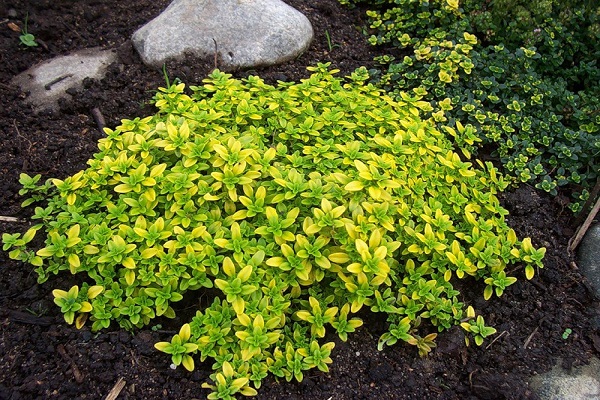
A perennial plant - the result of crossing common thyme and flea. It differs from other varieties in its pronounced lemon scent. Moreover, it is not only the leaves that smell, but also the stem and flowers.
Plant appearance:
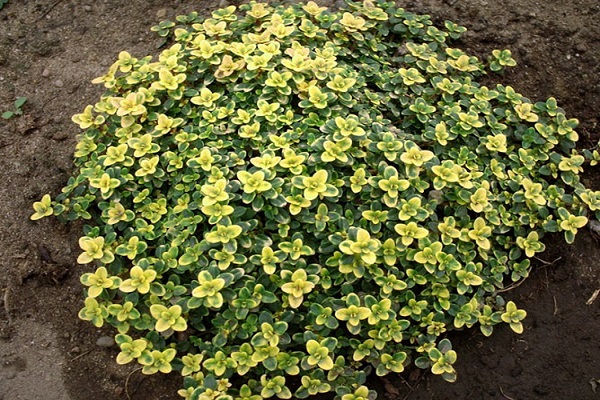
- bush height 15-25 cm;
- by autumn, the trunk near the base becomes lignified;
- spreading or erect depends on the growing conditions;
- leaf length 1 cm, width 3 cm, curved edges;
- flowers are on the stem itself, their diameter is 4 mm;
- bell-shaped flower, spike inflorescence.
The positive characteristics of the plant are beneficial in many areas, but do not overlook the slight lack of culture. She cannot stand a strong drop in temperature. Therefore, it is recommended to cover it in winter. If this is not done, the stems will die off every year, and the plant will turn from a perennial to an annual.

Lemon thyme varieties
Selection does not stand still, today a large number of varieties of this medicinal herb are known. But there are among them the most common, which many summer residents know firsthand.
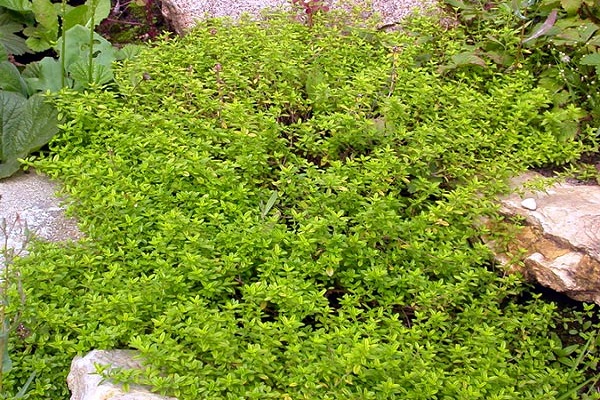
Donna Varley
A variety of lemon thyme, Donna Varley, has all the positive characteristics of the plant.
Description:
- height 10 cm;
- fast growing plant;
- leaves are small, 5-10 mm long, golden color, with a yellow-green tint;
- flowers are small, collected at the end of the stem, light purple in color;
- flowering time: May-August.

Donna Varley's thyme variety prefers sunny areas. If it grows in the shade or partial shade, it stretches and becomes faded, losing the golden hue of the leaves.
It needs additional watering only in case of a very dry period. The rest of the time it is content with natural precipitation.
When choosing a soil for planting, it is better to opt for a fertile and drained one; strongly acidic types of soil should be avoided.
Donna Varley thyme has strong immunity to diseases.If the plant is trimmed regularly, it grows compact and dense.

Silver Queen
A common variety of thyme has the following characteristics:
- height 10-15 cm, during flowering 30 cm due to rising peduncles;
- width 80 cm;
- fast growing plant;
- leaf length 1 cm, dark green with white edging, bent downward;
- small light pink flowers, collected in a loose ear;
- blooms from June to August.
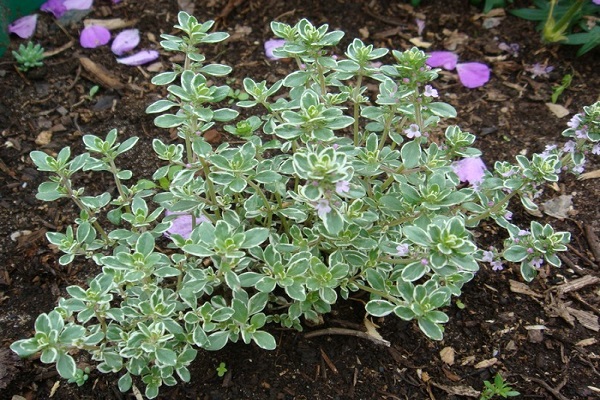
Prefers to grow in the sun, blooms well in the shade. He chooses fertile and drained soils. Does not like acidic soils, but grows in slightly acidic soils. Pruning is necessary to form a compact bush.
Thyme is undemanding for watering, but it needs additional moisture during dry periods in spring and summer. Waterlogging of the soil is not allowed. The plant is not sick with anything, it is not afraid of pests.
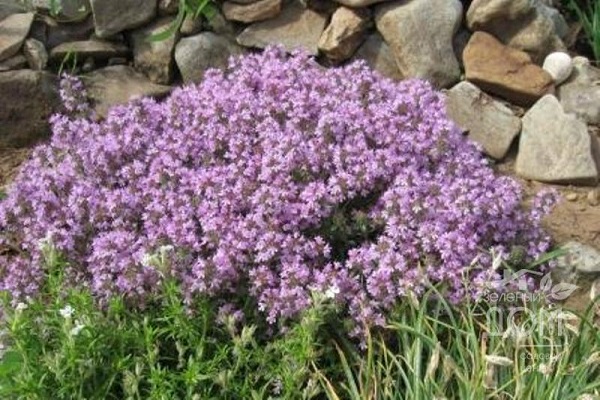
Golden Duarf
Summer residents prune plants to form compact, dense bushes used for alpine slides or garden decorations.
Characteristics of Golden Duarf thyme:
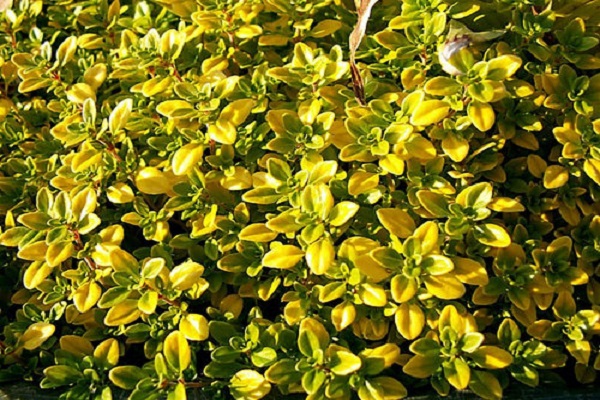
- height 15-30 cm;
- fast growing plant;
- leaf length 1 cm, bright green color with yellow spots;
- flowers are small, pink, collected at the tips of the stem in spikelets;
- blooms from June to August.
Thyme is undemanding to moisture, but does not like waterlogging. Practically not susceptible to diseases and attacks of pests. It is better to choose fertile soil, thyme grows under any lighting conditions. Not afraid of frost. It is widely used for decorating areas, the reason is that lemon thyme has a bright and unusual color of leaves.
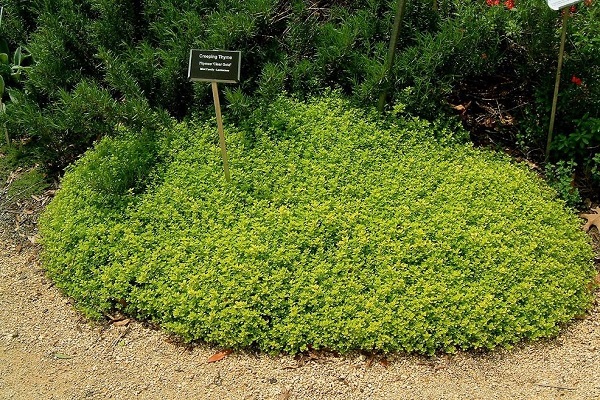
Bertram Anderson
A perennial plant with a strong lemon scent.
Description of thyme by Bertram Anderson:
- height 20 cm;
- growing rapidly;
- leaf length 1 cm, bright yellow color;
- flowers are lavender-pink, small, during flowering their size reaches 30 cm;
- blooms from June to July.
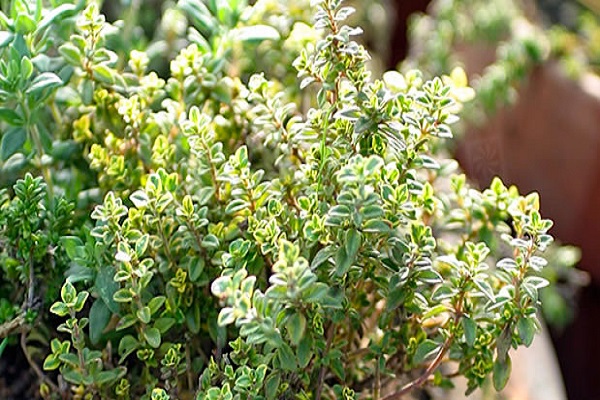
Thyme grows in the shade and sun. When choosing a place for planting, they pay attention to the fertility of the soil. It should be neutral. Do not choose places with acidic soil.
Anderson thyme tolerates drought, but additional watering is required during periods of particularly hot days.
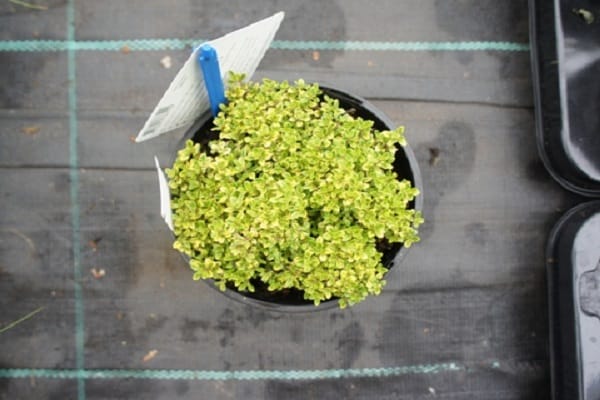
Growing thyme from seeds in the open field
The most tried and true way to propagate and grow thyme is by planting seeds. Even beginners in this business should not have any particular difficulties.
The cultivation of lemon thyme has no peculiarities. It is enough to choose the right place, choose seeds and carry out agrotechnical techniques familiar to all summer residents.
First of all, the summer resident selects a place for the plant to grow and develop well. A lighted area of moderate fertility and protected from moisture stagnation is required. Properly organized drainage will help get rid of excess moisture.
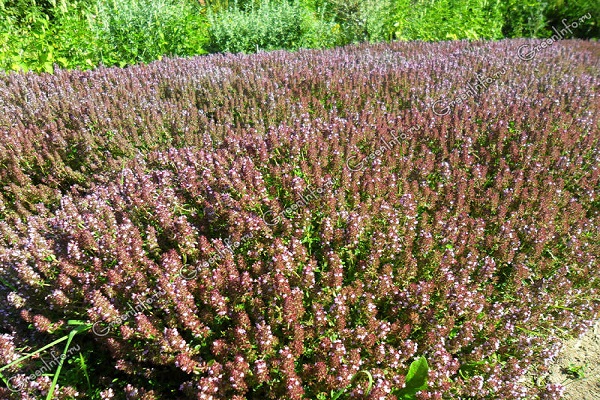
The shade has a detrimental effect on the thyme, its peduncles stretch upward, and the plant itself turns pale.
Thyme seeds of any variety are sown in autumn and spring. The main condition is a long warm period for the thyme to take root.

Before you start planting, you need to prepare the site, loosen it not very deeply and remove all the weeds. Urea and humus are introduced, then they begin to plant. Thyme seeds are sown superficially, not deeply burying them in the soil. Sprinkle on top with a thin layer of river sand. The distance between the rows is 40 cm.
Plantings need moisture for growth, so they strictly monitor that the soil does not dry out. When the thyme grows up, it must be thinned out, leaving a distance of 30 cm between the bushes.
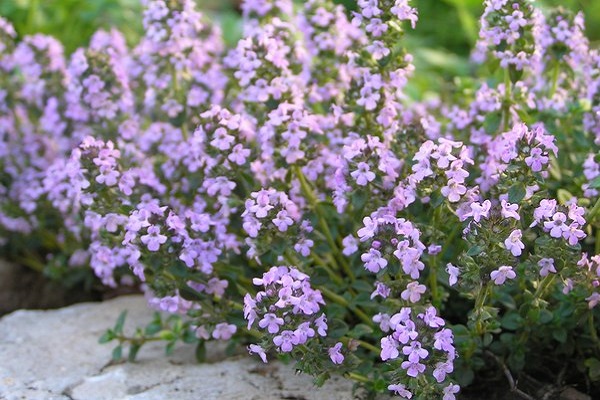
Growing a plant at home
You don't have to do anything special to grow lemon thyme. There will be no difficulties with growing. Thyme is unpretentious and undemanding to conditions.It is enough to fulfill some requirements, and the plant will feel good on the windowsill in a pot.
You need to purchase a small flower pot with a diameter of 15-20 cm. Choose a sunny place.
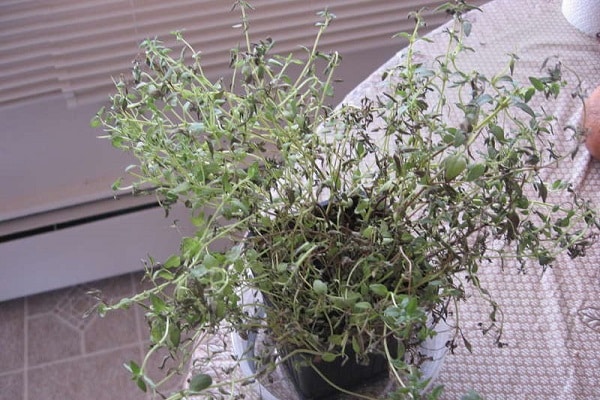
You should start with drainage, layer height 2 cm. Then the fertile soil, watered with water and sow thyme seeds. Embedding depth 1 cm, shoots will appear in 10 days. All this time, they carefully monitor the soil moisture, avoiding drying out.
After the thyme has risen, it is provided with warmth and sunshine. So the thyme will develop correctly, the plants will not stretch out and will not lose their smell.
Leaves are torn off constantly, do not forget that you do not need to cut off strongly. The plant will weaken or die.
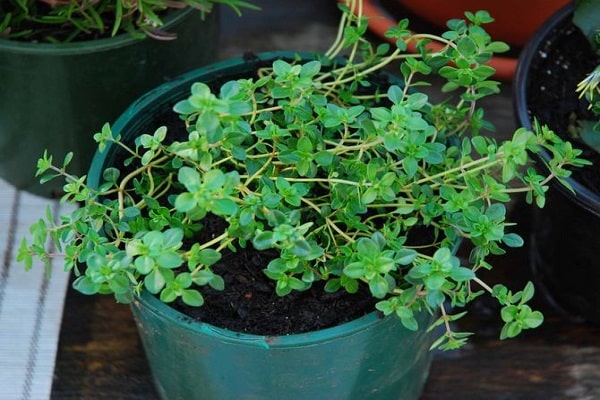
Plant care
Thyme does not require special care. But if you follow some rules, an elegant, beautiful bush of thyme becomes a decoration of the garden.
Watering
Water regularly, but in moderation, lemon thyme does not tolerate waterlogging. Increase the amount of watering and the volume of water only during the flowering of thyme.
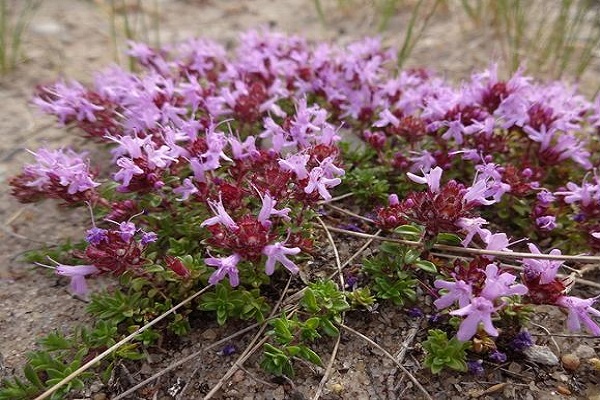
Pruning
Plants for flower beds form. It is enough to cut the tops in the fall, and in the spring the thyme will begin to grow in width, forming a wide and voluminous bush.
Loosening
It is necessary to loosen the soil to help retain moisture and give the thyme roots enough oxygen to develop.
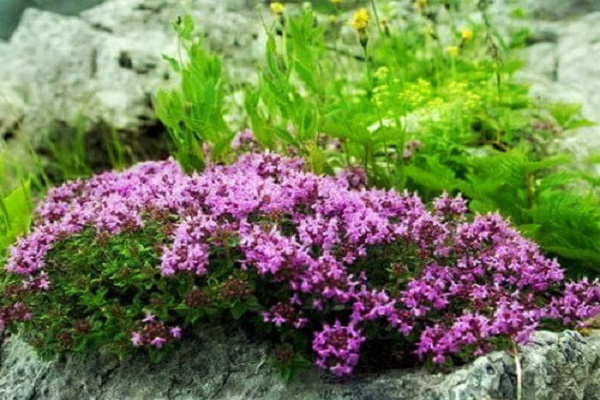
Top dressing
Fertilizers are introduced even when planting lemon-smelling thyme seeds, urea is added. After this, it must be done every spring.
Fresh manure is strictly prohibited for this medicinal plant. If the soil has high acidity, it is allowed to add some wood ash to the soil. In the following years, mineral fertilizers will do.
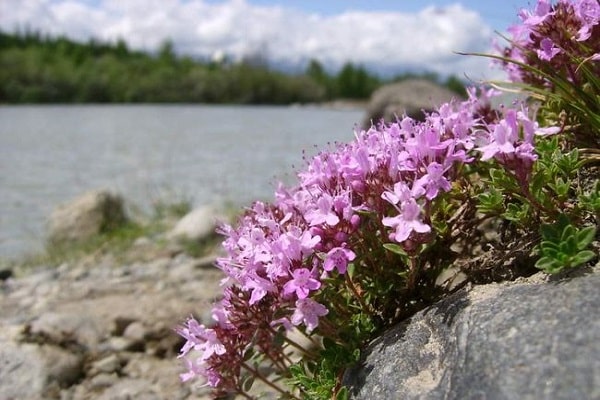
Protection from pests and diseases
Thyme has strong immunity due to aromatic substances. But due to improper agricultural technology, thyme is attacked by insects:

- aphids;
- meadow moths;
- sandy lollipops;
- weevils.
To prevent the plants from getting sick, it is necessary to follow the rules of agricultural technology.
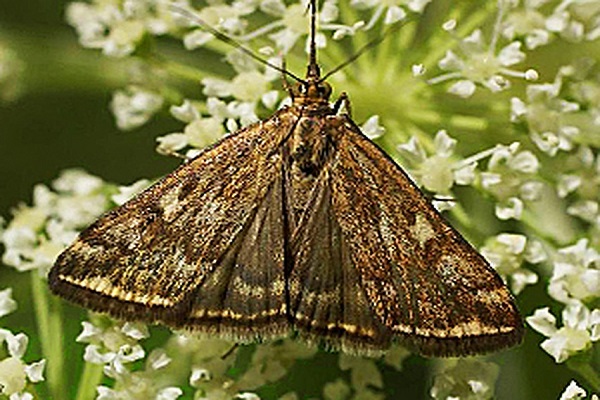
Home care
It is as easy to look after in the house as in the garden. Thyme needs light and temperature. In the fall, the pot of thyme is removed to a darker window. Or lower the room temperature. It is even recommended to put thyme on the balcony, provided that it is glazed and does not freeze too much.
Feeding is optional; mineral fertilizers are added if desired. In room conditions, pruning is carried out 2 times:
- before the onset of cold weather;
- after the end of winter.
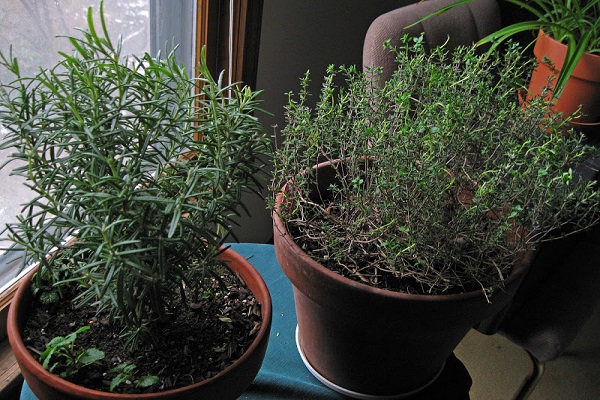
Water the thyme as needed, without overdrying or flooding the plants.
Harvesting
For fresh consumption, thyme leaves and stems are harvested at any time. This is done carefully, with the help of garden tools, damage to the roots leads to the death of the entire plant.
For medicinal purposes, the entire aerial part of the thyme is used; it is cut from June to August during the flowering period. At this time, the plant is most fragrant and healing.
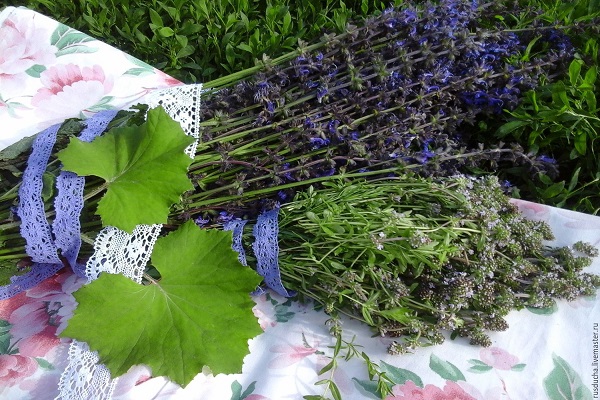
Dried thyme, spreading it out in a thin layer or hanging in bunches, in a dark, well-ventilated room. After the thyme has dried, it is crushed and placed in sealed containers. The harvested crop is stored for 2 years. Thyme is placed in a dark place.
Lemon thyme contains many substances that benefit the body. It is not difficult to grow medicinal herbs, and maintenance is minimal. Thyme grows beautifully on the windowsill, delighting with the harvest all year round.
